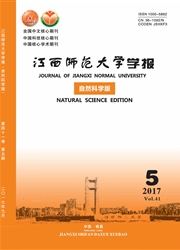

 中文摘要:
中文摘要:
通过分析5种共栖蝙蝠的形态和回声定位声波特征,研究了它们空间生态位分化问题.结果发现:大蹄蝠(Hipposideros armiger)是共栖蝙蝠中体型最大的物种,适合在开阔的树冠或空地上方快速飞行;中菊头蝠(Rhinolophus affinis)、皮氏菊头蝠(Rhinolophus pearsoni)和大耳菊头蝠(Rhinolophus macrotis)体型中等,中菊头蝠和皮氏菊头蝠适合在树冠下捕食,大耳菊头蝠适合在较复杂的树林中、枝叶间捕食;大卫鼠耳蝠(Myotis dawidii)是我国特有种,也是5种共栖蝙蝠中体型最小的种类,适合在复杂树冠间、枝叶间和灌丛中捕食较小的昆虫.所以,同域共栖5种蝙蝠的空间生态位显著分化.
 英文摘要:
英文摘要:
The spatial niche of five species of sympatric bats were discussed by studing the morphologic features and echolocation calls of five bats species. Hipposideros armiger had the greatest body size among these five species and was adapted to fly fast in open area,such as above treecmwns and vacant area. Rhinolophus affinis, Rhinolophus pearsoni and Rhinolophus macroti had middle body size, R. affinis and R. pearsoni prey insects below treecrowns, but R. macroti was fitted to fly in dense forest and trees around. Myotis davidii was endemic species with the smallest body size among the five species, and this species may prey in the complex treecrowns and bushwood. The significant differences of wing and calls of the five species may resulted in the spatial niche differentiation in foraging habitat.
 同期刊论文项目
同期刊论文项目
 同项目期刊论文
同项目期刊论文
 Response to seasonal change of insect resources in Changbai Mountain temperate forests by Greater Ho
Response to seasonal change of insect resources in Changbai Mountain temperate forests by Greater Ho Seasonal habitat use by greater horseshoe bat Rhinolophus ferrumequinum(Chiroptera: Rhinolophidae) i
Seasonal habitat use by greater horseshoe bat Rhinolophus ferrumequinum(Chiroptera: Rhinolophidae) i Plasticity in echolocation calls of Myotis macrodactylus (Chiroptera:Vespertionidae): implications f
Plasticity in echolocation calls of Myotis macrodactylus (Chiroptera:Vespertionidae): implications f 期刊信息
期刊信息
